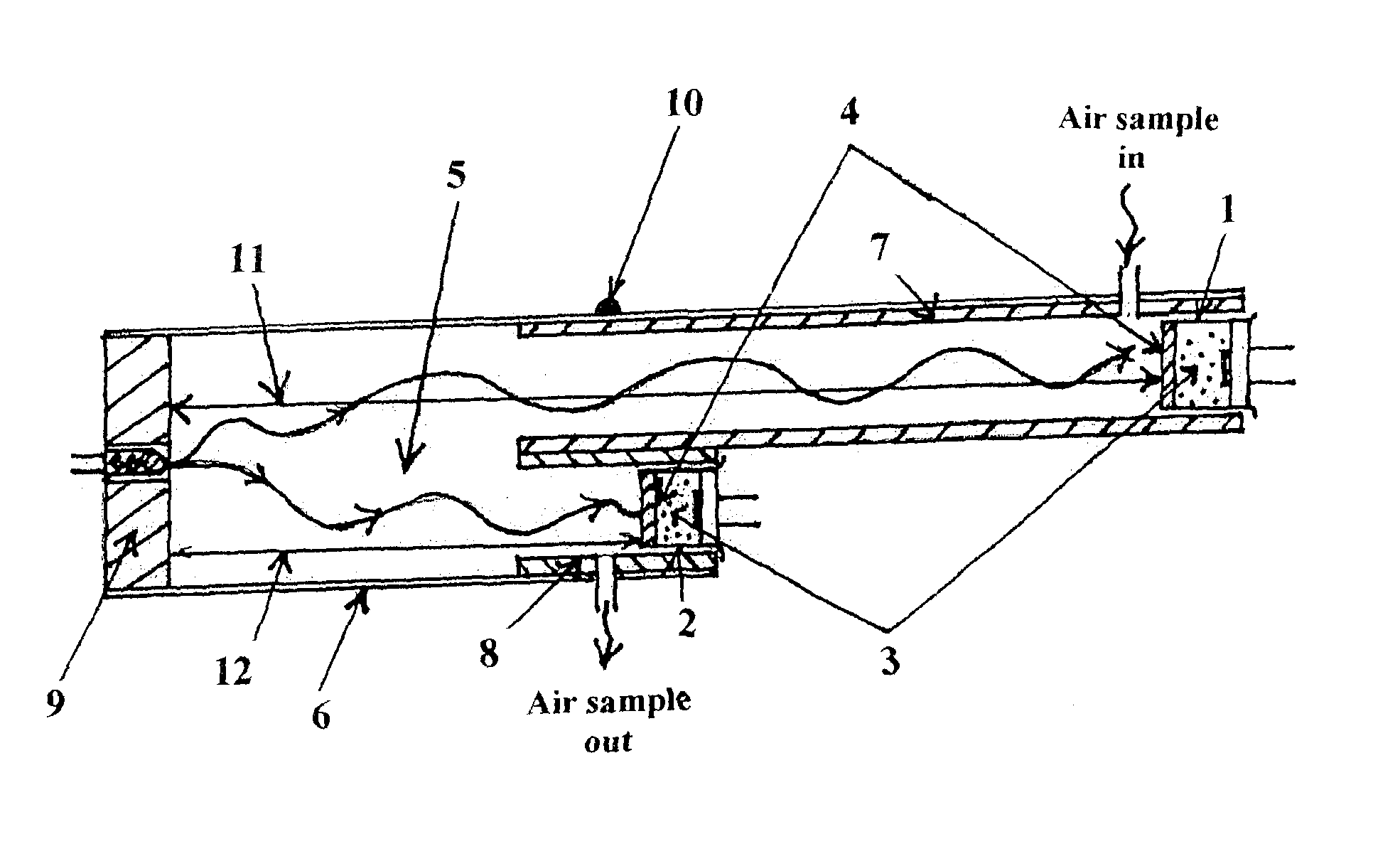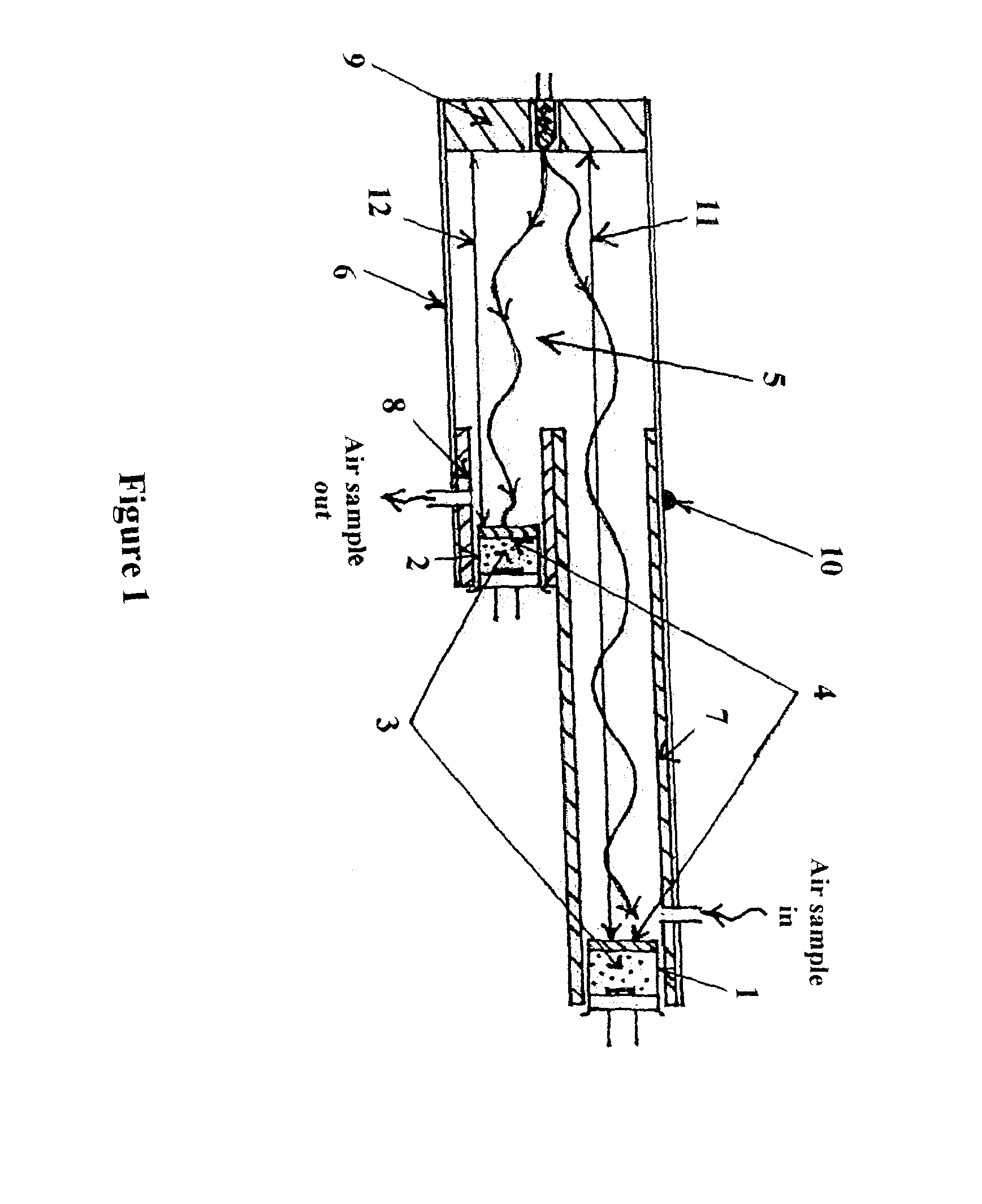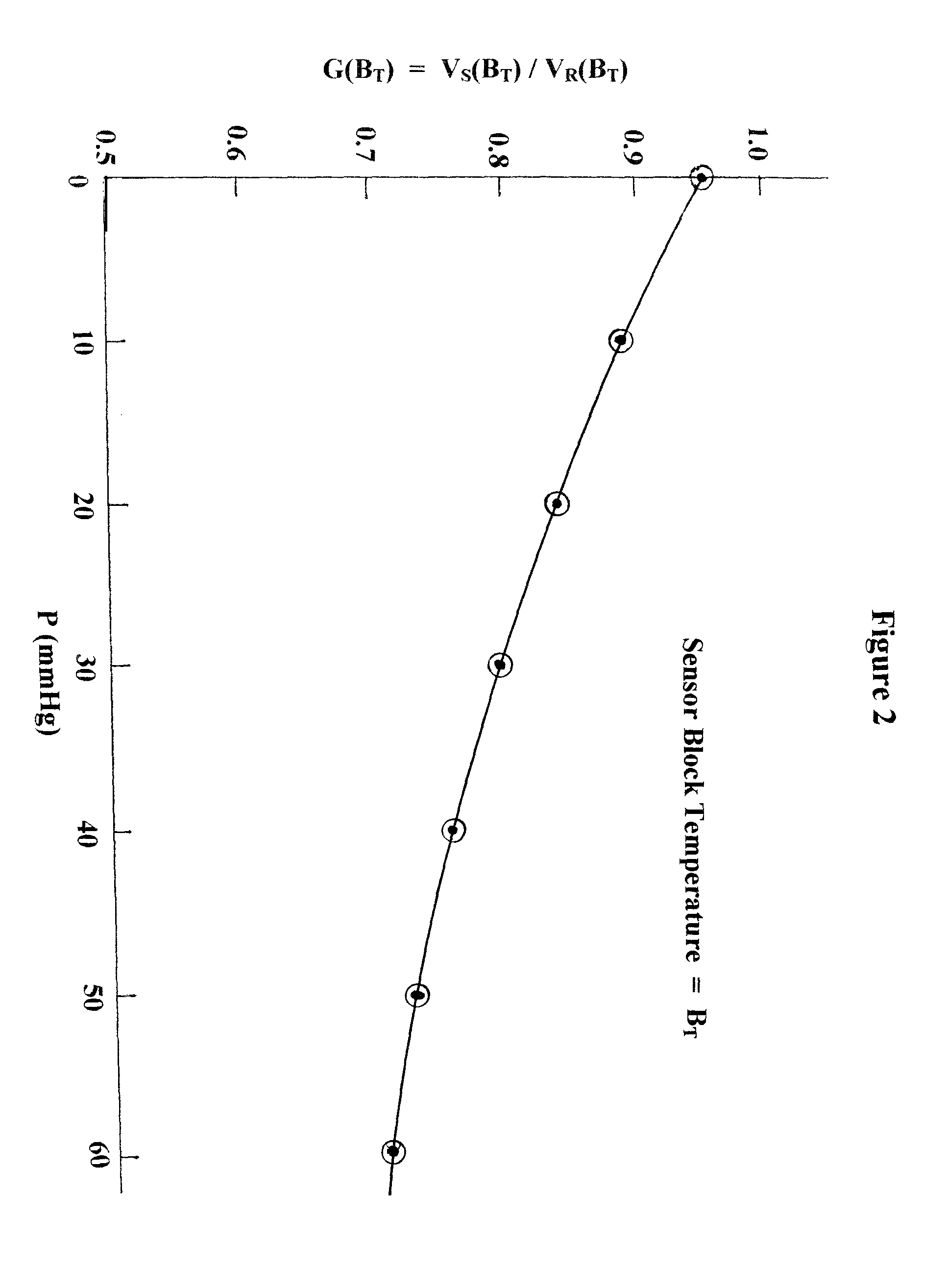Calibration methodology for NDIR dew point sensors
- Summary
- Abstract
- Description
- Claims
- Application Information
AI Technical Summary
Benefits of technology
Problems solved by technology
Method used
Image
Examples
Embodiment Construction
[0021]The present invention complements the teaching of advancing a methodology for NDIR gas sensors capable of significantly reducing output drifts over time disclosed in U.S. Ser. No. 12 / 859,749, the disclosure of which is specifically incorporated herein by reference. It is important to point out the fact that such a methodology only applies to NDIR gas sensors and not to other technology types of gas sensors. It is therefore appropriate to begin the detailed description of the current invention by referencing the inventor's earlier disclosed teaching in the design of a dual-beam NDIR gas sensor that is capable of significantly reducing output drifts over time. Specifically and for purposes of illustration, the dual-beam methodology discussed herein is for the implementation of an NDIR H2O or dew point gas sensor.
[0022]Prior to the teaching disclosed in U.S. Ser. No. 12 / 859,749, conventional dual-beam methodology utilized a spectral filter for the Signal channel that had its cent...
PUM
 Login to View More
Login to View More Abstract
Description
Claims
Application Information
 Login to View More
Login to View More - R&D
- Intellectual Property
- Life Sciences
- Materials
- Tech Scout
- Unparalleled Data Quality
- Higher Quality Content
- 60% Fewer Hallucinations
Browse by: Latest US Patents, China's latest patents, Technical Efficacy Thesaurus, Application Domain, Technology Topic, Popular Technical Reports.
© 2025 PatSnap. All rights reserved.Legal|Privacy policy|Modern Slavery Act Transparency Statement|Sitemap|About US| Contact US: help@patsnap.com



